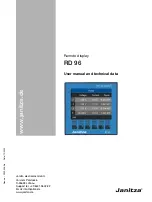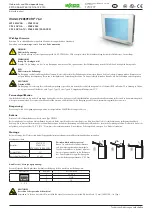
44
•
General
– change position frequently (around every 20 to 30 minutes) and take
regular breaks to avoid fatigue.
•
Back
– when sitting at your workstation, your back must be supported by your
chair’s backrest, which must be upright or angled slightly back.
•
Arms
– your arms and elbows should be comfortable and relaxed. Your elbows
should be close to your body. Hold your forearms and hands roughly parallel to
the floor.
•
Wrists
– when working with the keyboard, mouse or trackball, wrists should be
elongated and bent at an angle of no more than 10°. Take care to ensure that
your wrists do not rest directly on the edge of the table.
•
Legs
– your thighs should be horizontal or angled slightly downwards. The lower
legs should form an angle of approx. 90° to the thighs. Your feet should rest flat
on the floor. Use a footrest if you need one, but first ensure that your seat height
has been adjusted correctly.
•
Head
– your head should be upright or bent slightly forward. Do not work with
your head or upper body twisted.
During work, the top edge of the monitor should be at or slightly below eye lev-
el.
The size of the distance between the monitor and the viewer depends on indi-
vidual requirements. Distances between 50 and 60 cm are commonly used.
















































